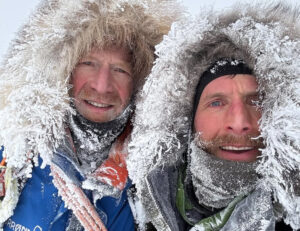A passion for the natural world drives many of our adventures. And when we’re not actually outside, we love delving into the discoveries about the places where we live and travel. Here are some of the best natural history links we’ve found this week.
Mysterious glass in the Atacama Desert may be from an ancient comet: Shards of twisted glass have turned up across a seven-kilometer-long corridor in the Atacama Desert in Chile. The unusual green and black glass originated from a large comet that exploded in our atmosphere 12,000 years ago. The explosion produced intense heat and wind that melted the desert sand, creating silicate glass. Only meteorites and other materials from space contained the minerals found in this glass.
Japanese ports swamped by pumice spewed from undersea volcano: Volcanic pebbles have blocked much of Japan’s southern coastline. Undersea volcanic eruptions spewed out the pumice that is affecting 30 ports in Okinawa and Kagoshima. The floating pebbles have also damaged a large number of fishing boats. The debris from the eruption has had a “huge impact on fisheries…as well as the environment,” said Denny Tamaki, Okinawa Governor. The Fukutoku-Oka-no-Ba undersea volcano erupted in mid-August. It is 1,000km away from Japan, near Iwo Jima, of World War II fame.

Polar bears eat whatever is available. Photo: Shutterstock
Tracking a polar bear’s diet
Polar Bears used to monitor climate change: Polar bears are helpful indicators of environmental change in the Arctic. The bears eat whatever food is readily available, and scientists can analyze their fat tissue. Their fatty acid signature acts as “a fingerprint for individual bears…you can see what that particular individual is eating,” says one researcher. Scientists can use this to monitor the distribution of marine mammals — the polar bear’s prey — in the Arctic.
SS Bloody Marsh shipwreck found: The rusted hulk of the SS Bloody Marsh, sunk by a German U-boat in 1943, has been discovered 160km off the coast of South Carolina. Torpedoes hit the oil tanker 78 years ago, on its maiden voyage. “Based on evidence surveyed, participating scientists are reasonably certain that it is SS Bloody Marsh,” the NOAA reported. A remotely operated camera discovered the wreck. The National Oceanic and Atmospheric Administration had been searching for the ship, which still holds 106,000 barrels of oil. “The site has the makings of an environmental disaster,” said experts.
The spider’s dance
Night vision and artificial intelligence reveal secrets of spider webs: Scientists have used artificial intelligence and night vision to see how spiders build their webs. Cameras with a fast frame rate captured the hackled orb weaver spiders at work. Web-making behavior was similar across individual spiders. Algorithms can now correctly predict the position of a spider’s legs as it works on a particular part of the web. “By following every tiny movement, this research is finally unlocking the complex ‘dance’ spiders do to make their webs,” said entomologist Adam Hart.
Repeated extreme ice melting in Greenland raises global flood risk: Extreme ice melt has increased in Greenland over the last four decades. Over the last 10 years, 3.5 trillion tonnes of ice have melted from the ice sheet that sits atop the world’s largest island. Since 1980, Greenland’s meltwater has increased by 21%. This, in turn, has raised sea level by one centimetre. Scientists believe that global warming and increasingly extreme weather cause this excessive melt. Models estimate that by 2100, the accelerating melt will raise the global sea level between 3 and 23 cm.

Icebergs in Greenland. Photo: Shutterstock
Saber-Toothed Cats were Social Animals: Saber-toothed tigers are one of the best-studied predators from the Late Pleistocene era. One particular individual with a deformed hip bone suffered from hip dysplasia, a hereditary disease. This suggests that the big cats were social animals. The affected individual would have needed a social structure to help them survive with this defect. “[The] animal…was able to live to adulthood,” said Dr. Mairin Balisi. “This suggests that it must have received support, perhaps by food-sharing with its family.”






